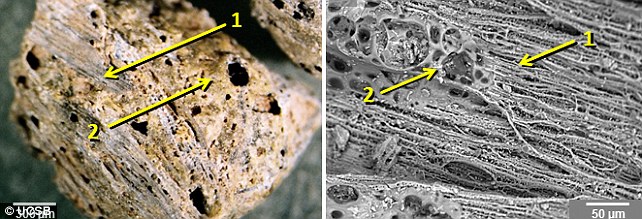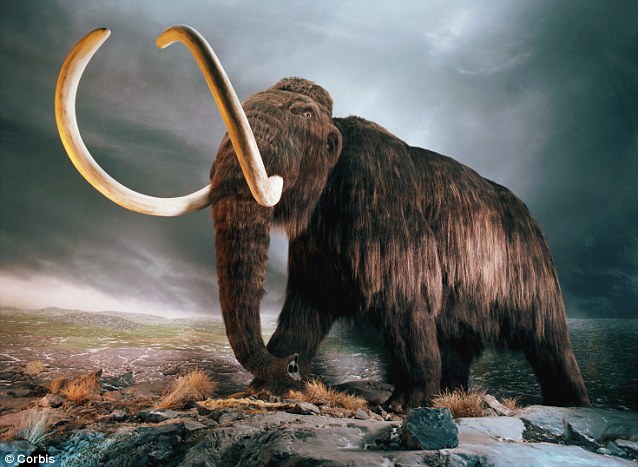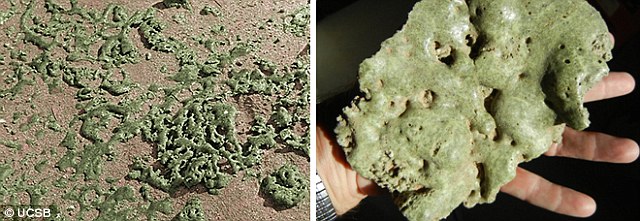Evidence of the meteorite's intense heat was found on two continents. The researchers believe the huge cosmic impact triggered a vicious cold snap, which caused widespread destruction.
The international team found a substance known as melt glass, which forms at temperatures of 1,7000 to 2,200 degrees Celcius and can result from a 'cosmic body' hitting the earth.

The material was found in a thin layer of rock in Pennsylvania and South Carolina in the US, along with Syria. Tests confirmed the material was not of cosmic, volcanic or human-made origin.
'The extreme temperatures required are equal to those of an atomic bomb blast, high enough to make sand melt and boil,' said James Kennett, professor of earth science at UC Santa Barbara.
The melt-glass appears identical to other material found in Meteor Crater in Arizona, and the Australasian tektite field, and also matches melt-glass produced by the 1945 Trinity nuclear airburst in New Mexico in the US, Professor Kennett said.

In the cold period, known as the Younger Dryas, North American megafauna including mammoths and giant ground sloths disappeared forever, along with a prehistoric civilisation called the Clovis culture.
The Clovis people used distinctive bone and ivory tools and are regarded as the first human inhabitants of the New World.

Syria is the easternmost site yet identified in the northern hemisphere, but the researchers have yet to find a limit to debris field of the impact. Melt-glass has been found in rock layers of the same age in Arizona and Venezuela.
Scientists found the melt glass - evidence of the meteorite's intense heat - in Pennsylvania and South Carolina in the US along with Syria


'Archeologists and anthropologists consider this area the "birthplace of agriculture," which occurred close to 12,900 years ago,' Professor Kennett said.
'The presence of a thick charcoal layer in the ancient village in Syria indicates a major fire associated with the melt-glass and impact spherules 12,900 years ago,' he continued.
'Evidence suggests that the effects on that settlement and its inhabitants would have been severe.'
The study was published today in the Proceedings of the National Academy of Sciences.



...but I think it's really interesting that one of the "impact sites" was in Syria.
And it's also really interesting that they compare the melt glass to that produced by nuclear explosions.
So, this research is actually uncovering evidence of an ancient nuclear war. How can that scientist grin so stupidly and deny that this is what has been discovered?